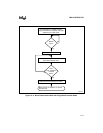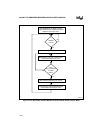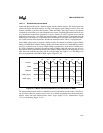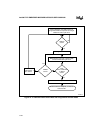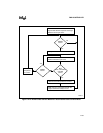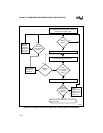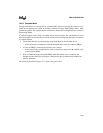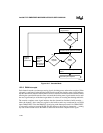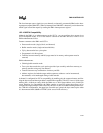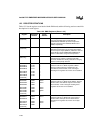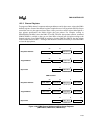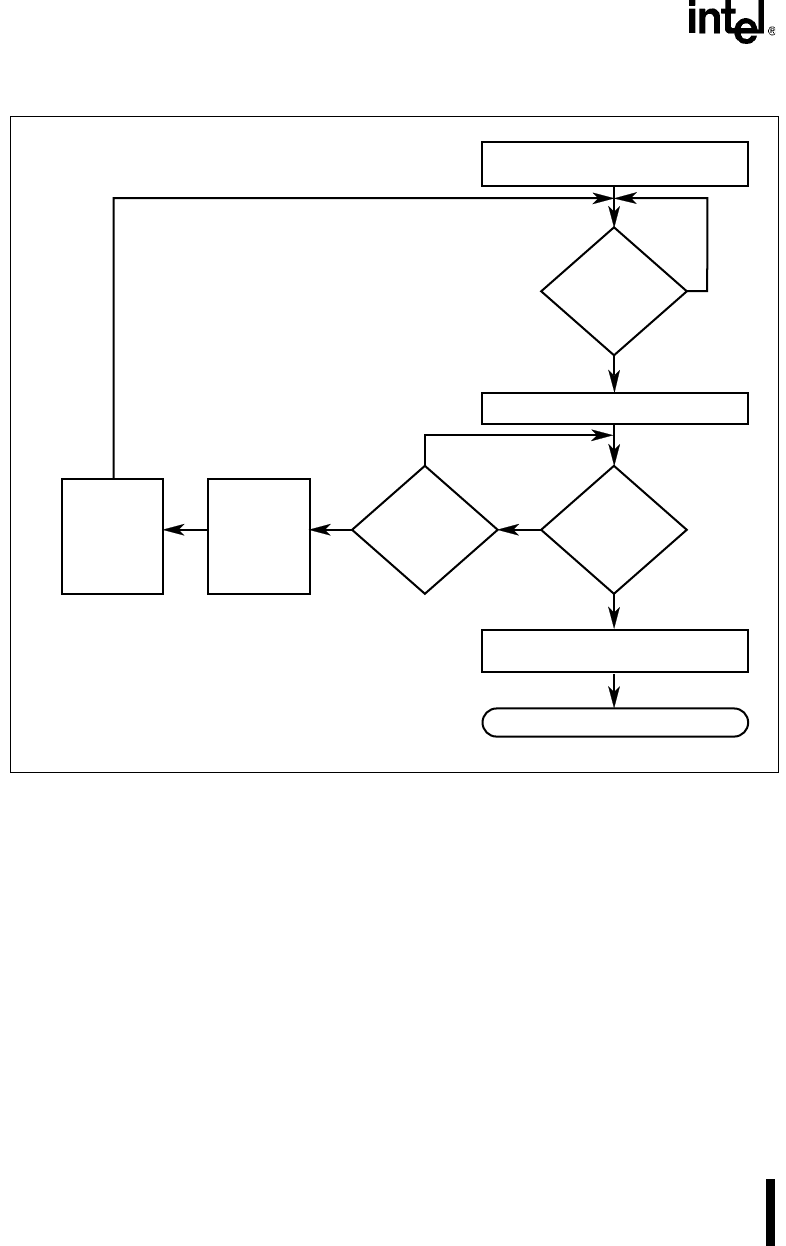
Intel386™ EX EMBEDDED MICROPROCESSOR USER’S MANUAL
12-26
Figure 12-17. Cascade Mode
12.2.9 DMA Interrupts
Each channel contains two interrupt causing signals, chaining status and transfer complete. When
a channel is configured for the chaining buffer-transfer mode, the chaining status signal indicates
that the channel has started its buffer transfer and new transfer information can be written without
affecting the current buffer transfer. Once activated, the chaining status signal remains active until
the most significant byte of the base target address is written, or resetting the chaining enable bit.
The transfer complete status signal indicates that the channel has finished a buffer transfer —
either the channel’s byte count has expired or the buffer transfer was terminated by an EOP#
input. DMACLRTC clears the DMAINT signal going to the Interrupt Control Unit. DMACLRTC
is executed by writing to location F01EH; the data written to the location is immaterial — writing
any data to the location causes the DMA to deactivate the transfer complete status signal.
Cascade cycle complete.
A2337-02
DRQ
n
active?
Yes
No
Refresh
request?
Yes
No
Cascaded
device
deasserts
DRQ
n
,
relinquishing
bus control.
Refresh
cycle is
performed.
DRQ
n
active?
Yes
No
After initialization, the DMA channel
is programmed.
Cascaded device gains bus control.
Cascaded device relinquishes bus
control.




